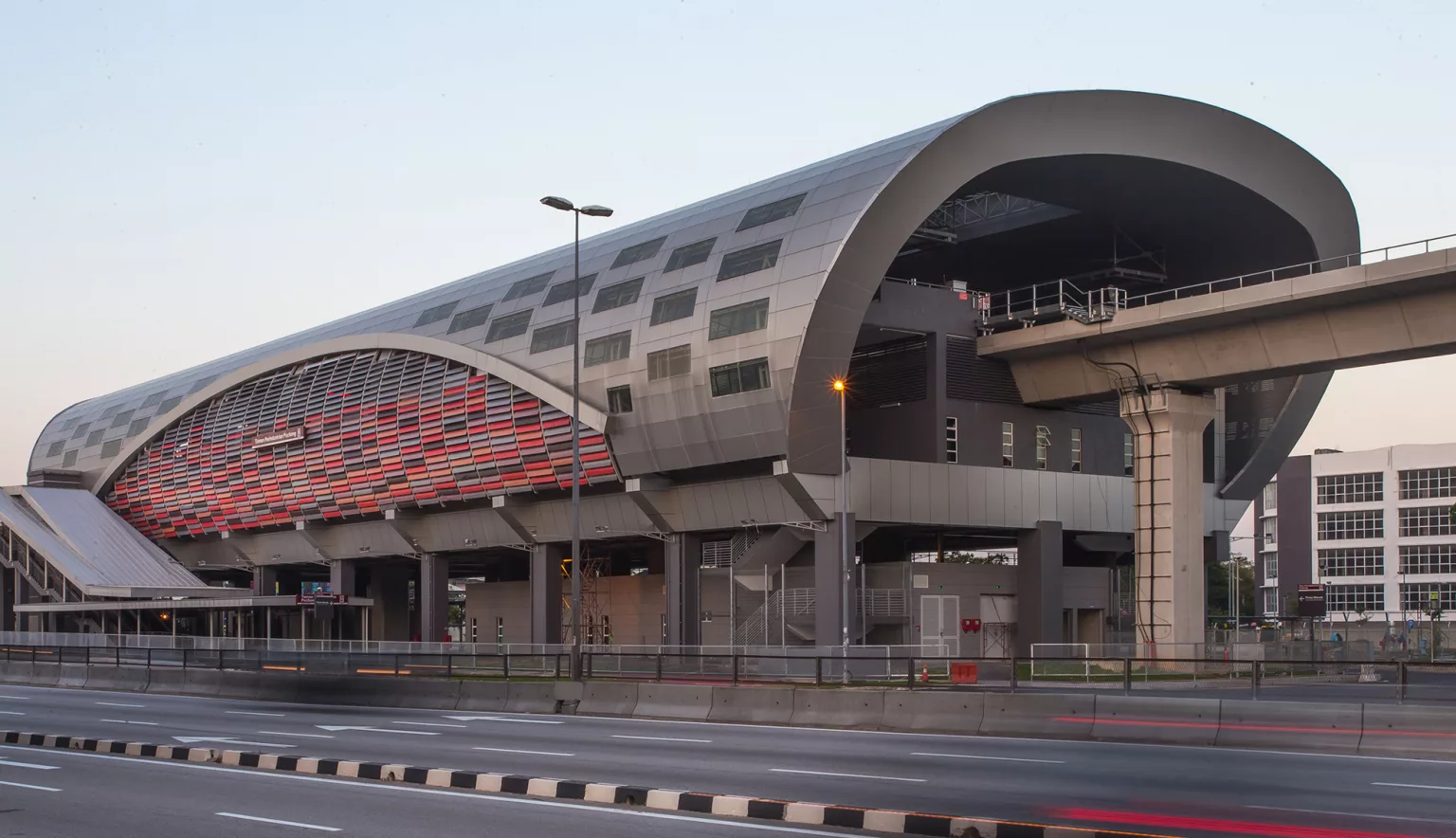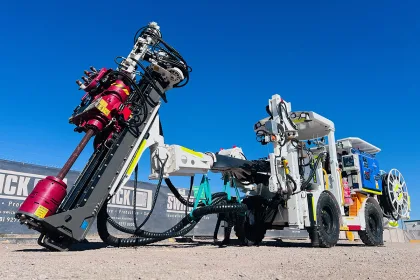Despite the challenges posed by the COVID-19 pandemic, the Malaysian construction industry continues to weather the storm. We spoke to NRY Architects about the firm’s various projects and the latest innovations in the industry.
BUILDING 2021
The construction industry is the backbone and spearhead of the Malaysian economy.
The sector’s heyday occurred during the 1990s economic boom that saw the construction of MYR billions of mega-development projects, such as the Kuala Lumpur International Airport (KLIA) terminal building, and Petronas Twin Towers/Kuala Lumpur City Centre (KLCC).
This industry momentum has spurred forward into the 21st century with the construction of many infrastructure and megaprojects such as new double-track railroads, storm water-smart transport tunnels, and the Second Penang Bridge. The construction industry was doing fairly well despite the setbacks in the last few years mainly contributed by political uncertainties, amongst other factors which have generally impacted the Malaysian economy. However, the general economic slowdown did not stop investors and the general public from investing in construction industries and the property market. In the face of the pandemic, Malaysian construction is one of the key economic sectors that are severely impacted.
“As the COVID-19 outbreak unfolded it was a huge blow to all industries,” begins Alis Marlinna, COO of NRY Architects. “The construction industry is among those badly affected as construction activities were stopped during the Movement Control Order (MCO) in the first and second quarter of 2020. The most significant impacts were caused mainly by the restrictions imposed under the MCO, which had consequently led to delays in project delivery, general slowdown of site works due to financial and logistic issues, labour constraints and interrupted supply chain, amongst other factors.
“Despite the slowdown due to pandemic, we remain steadfast and are optimistic of our construction industry’s resilience and growth, in tandem with the general economic condition that has been gradually recovering, thanks to the current nationwide vaccine rollout.”
NRY Architects is one firm that has endured and evolved over this challenging period. Beginning as a modest architectural consultancy practice in 1992, NRY Architects focused on institutional buildings, mass housing and straightforward commercial developments. The firm’s earliest large ventures include Maxis Tower, a 49-storey office tower erected next to the iconic Petronas Twin Towers, Kuala Lumpur. On top of this, NRY Architects was tasked with government contracts such as the design and delivery of the fast industrialised building system (IBS) construction method for almost 10,000 units of public teachers’ quarters across Malaysia in the early 2000s. It was these two major projects that elevated NRY Architects’ position in Malaysia’s architectural sphere and helped the firm rise to the level it is today.
“29 years later, NRY Architects is now one of the biggest architectural firms in Malaysia,” Alis Marlinna tells us proudly. “Our main headquarters in Kuala Lumpur are currently empowered by 120 staff members, including a number of our ground staff in various construction sites. Our clientele list is exemplified by our diverse portfolio, ranging from government agencies, property developers, corporate clients, tourism and hospitality, infrastructure and private clients.
“Over the past few years, besides focusing on various local projects, we have been working on establishing our overseas expansion, where we have been engaged and provided architectural design services and proposals for a number of projects in the region and beyond. With this planned expansion in mind, we have formed a subsidiary company called NRY International to undertake future overseas projects.”
NRY Architects’ wealth of experience is just one factor that sets it apart from its competitors in the industry. Across its design and construction projects spanning Malaysia and beyond, the firm’s diverse portfolio includes mixed-use, commercial, residential, institutional, transportation, hotel and resort, healthcare and master planning projects.
“Due to our vast experience, our clients usually approach us not just for architectural consultancy services, but other value-added services like advice on how to fully optimise their land, property or investment through feasibility and market studies, market trends and products,” Alis Marlinna tells us. “We also provide other services such as project management, urban planning and interior design.”
The pandemic has given rise to the rapid necessity of digital services across the globe and in all sectors. For the construction sphere, technology and innovation have surged forward to bring various software, such as building information modelling (BIM), to the fore.
Despite the implementation of BIM existing at a relatively early level across Malaysia, the needs and demands of customers and clients have helped the industry recognise that BIM is here to stay, an innovative and necessary development in this rapidly advancing world.
“We took the initiative to be BIM-ready by spending the past few years setting up, investing and training our staff,” Alis Marlinna informs us. “Now we are among a few architectural practices in the country that have been recognised as an approved BIM services provider in Malaysia by the Construction Industry Development Board of Malaysia (CIDB).
“On top of that, our works and practice have been accoladed with multiple awards from the industry, that include the BCI Asia Awards – Top Ten Architects in Malaysia, for several years, Malaysian Institute of Architects (PAM) Awards, and others. Over the years we have collaborated with a few world-renowned architects namely, Kohn Pedersen Fox Associates, Arquitectonica, Pelli Clarke Pelli Architects, SOM and Pickard Chilton to name a few. These collaborations have provided us with invaluable knowledge and experience, especially in dealing with complex projects, various stakeholders and industry specialists.”
NRY Architects has a host of upcoming projects spanning multiple regions of Asia. The Sihanoukville International Airport (Cambodia) project was awarded to the firm after it won a design competition organised by the client during 2018. Fully designed by the NRY Architects team, the project is conceptualised, developed and documented using BIM. The airport is of a modern terminal design with the essence of Cambodian cultural elements that will be the main airport to this coastal city.
NRY Architects is also proud to be a part of the Malaysian Government’s national building initiatives, particularly in improving public transportation and providing affordable housing. This is demonstrated by the company’s involvement in the design and construction of new LRT and railway stations as well as a number of affordable housing projects across Malaysia. On top of this, NRY Architects is currently focusing on several large scale private projects, master plan and mixed-use developments.
As digitalisation sits at the heart of industry development, NRY Architects is moving towards a cloud-based work environment in which its design and operation are all conducted online and stored virtually, for full connectivity and flexibility. Muhammad Hazim Azami, BIM Coordinator at NRY Architects, sheds some light on the subject.
“This has allowed for greater collaboration between our local and international partners on every project,” he states. “We have also invested in the latest architectural software and applications, such as Autodesk AEC and BIM 360 for an efficient and smooth workflow with high-quality output/results in every design and construction stage.
“More rendering software now is readily available compared to before. For instance, we are currently using a cloud-base rendering software that has an extensive library and plugins which can produce quality renderings in a short amount of time. This has helped a lot in working more efficiently to produce design reports and presentation materials for our clients.
As an integral part of our design process, we also provide our clients with Virtual Reality (VR) and Augmented Reality (AR) experience which enables them to virtually explore the spaces and understand our designs better. We believe that two-way communication with the clients is critical in understanding their needs and for us to achieve them.
“Besides that, we also aim toward paperless transaction in our operations, for instance, e-time sheet and other related human resource and operation matters.”
When it comes to business operations, NRY Architects’ supply chain partners are an integral part to the functioning of the firm. The clear communication and knowledge of where and what is being sourced is invaluable to the operations of the firm; this efficiency reduces the probability of costly errors that could arise down the line.
“Good supply chain management enables a project timeline, deadlines and other milestones to be met easily whilst keeping everyone involved informed of any changes and developments throughout the process,” Alis Marlinna explains. “It also ensures effective collaboration and communication between stakeholders to avoid significant delays in a project.
“At NRY Architects, we believe that the supply chain is not only limited to workflow or working relationship between different contractors, subcontractor and suppliers during the construction stage. It also involves everyone in the supply chain working closely and collaboratively, so that the collective efforts effectively deliver the client’s requirements and avoid unnecessary and abortive work.
“Therefore, the relationship between architects and other parties, including clients, consultants, suppliers, contractors and end-users is imperative in creating a better-built environment. The process begins by understanding the client needs and continuous engagement with all parties, where each party plays different roles and but shared a common vision of creating a better building for the owner or end-users. One party cannot stand-alone and operate solely without the synergy of all involving parties in each construction project.”
This same importance is placed on individual employees within the firm. NRY Architects places considerable emphasis on career development and upgrading the skills of its staff. The firm encourages its staff to continuously develop and learn; an aspect of in-house operation that is usually achieved by providing company training and sponsorship for seminars and courses that would greatly help the employees in their individual careers as well as personal development.
“Our organisation also has policies that reward merit-based work and dedication, this is done through regular performance appraisal to determine annual increments, bonuses and career advancement,” Alis Marlinna tells us. “To some who are more academically inclined, we encourage them to participate in academic programmes organised by universities and institutions by sharing their knowledge with students, contributing to research and development.”
Carrying these key values into the future, NRY Architects’ priority is to continue to endure the economic uncertainty and emerge in a stronger position than before. With this in mind, NRY Architects is expanding its BIM-related services as well as increasing expansion beyond Malaysian shores. To bind these elements together, the firm is going to also focus on building its corporate and brand identity through which to engage new clients and reinforce and expand its influence in a competitive market.




































